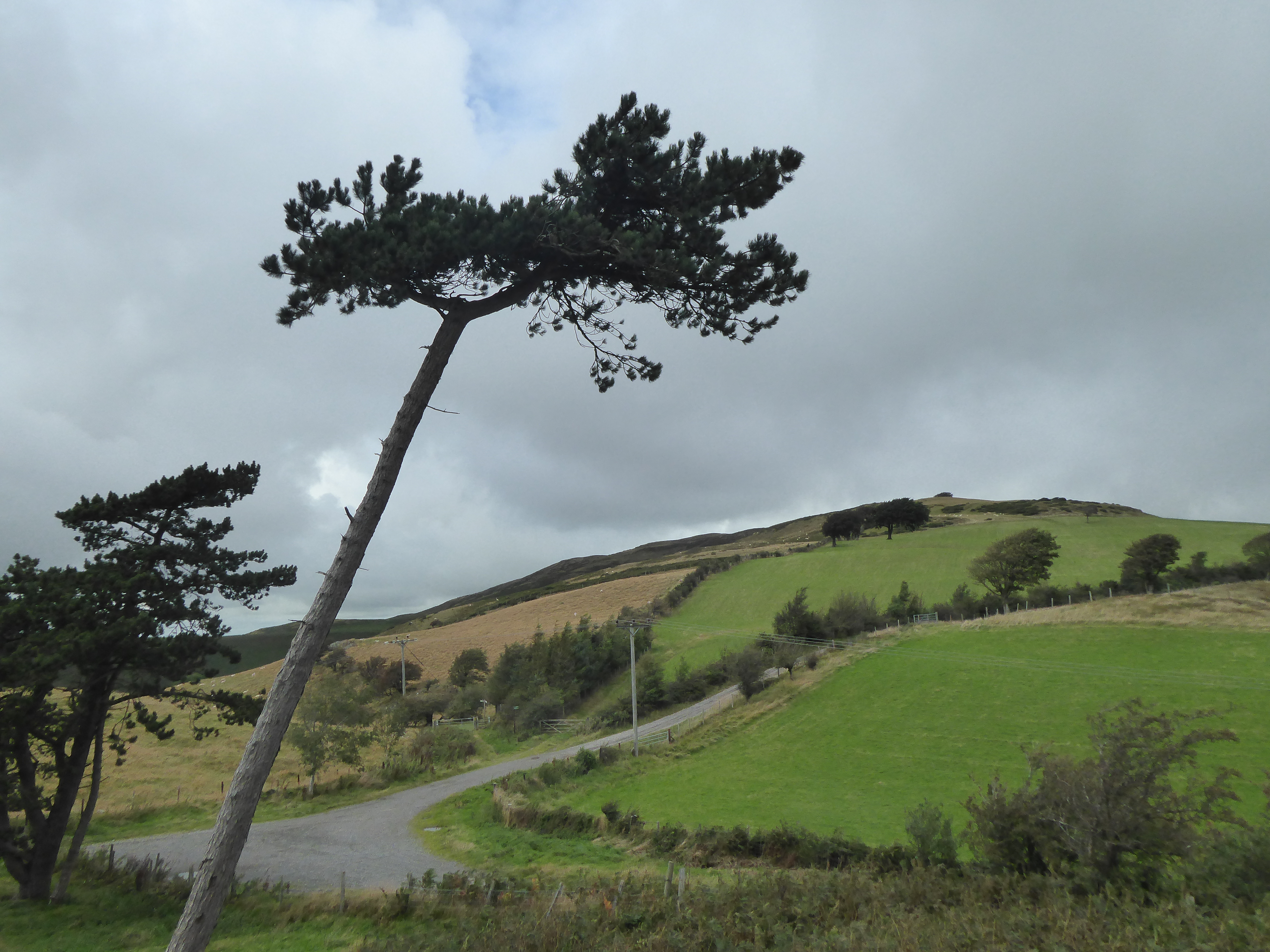
This was the day we were not looking forward to. For a while the weather forecast was adamant: heavy rain in the morning, lighter rain for the rest of the day. But the heavy rain cleared early, and it was just spitting when I went out into the streets of Ruthin in search of a bread roll for lunch. By the time we start out from the huge empty car park at Clwyd Gate it’s dry, and as a special measure C puts on his over-trousers, as a magic prophylactic against rain. The move works: apart from a heavy downpour later in the morning, we’re dry all day.

The Path treats us kindly, at least to begin with. Instead of marching us to the top of the next hills in the Clwydian range, Gyrn and Moel Eithinen, it leads us along the flanks of both. We’re not so lucky with Foel Fenlli, but the Path still doesn’t reach the summit, in order to avoid tramping on the Iron Age ‘fort’ that crowns it. This is just the first of a whole series of these forts, some of them very large in extent – testimony to the scale and complexity of the societies that inhabited these hills at the time.

At the hill’s north end we drop to a car park, and there waiting for us is our old friend P, who’s come from Wrexham by car to join us for part of the day. We exchange news, memories and opinions (including views on the ‘peg question’, discussed the day before), as we climb steadily towards the tallest of the Clwydian hills, Moel Famau. The final approach is steep, and as we reach the summit low clouds hang over the ruined base of the Jubilee Tower. The Tower was intended to commemorate the jubilee of George III in 1810. The building lay uncompleted, amid acrimonious disputes, familiar enough today, between client and builder. The remains look sinister and dungeon-like in the gloom. According to one of the toposcopes we should be able to make out Tyfan in the Ogwen Valley from here, but instead we can only see mist.

The Path drops down steeply from the summit and continues north towards the next peak, Moel Dywyll. Looking back we can now make out the Jubilee Tower more clearly: the weather’s improving. Horizontal banks of low cloud pile down on us from the north-west, but they keep their moisture to themselves. Before we drop sharply to the dip in front of Moel Arthur, P takes his leave of us, and we promise to meet for more walking in future. At the bottom the four of us remaining stop for lunch, and watch a group of cyclists from Lincolnshire arrive at their support van for lunch, before wheeling off to some far distant destination. We wonder how they’ve taken to the unaccustomed hills here.
Moel Arthur has a satisfying conical shape, and on its summit is an equally satisfactory circular Iron Age fort. The Path pretends to gets to the top (steep ascent; several stops to catch breath), but at the last minute veers away and heads north-west.

After a descent we track a wood and climb up yet another, taller hill, which carries a huge fort called Pencloddiau. In its middle is a Bronze Age burial chamber, reconstructed in a rather too neat circle. By this stage there are long views from the hilltops to east as well as west. Even though the dark clouds are still rolling over, we can see across the Denbighshire moors and to the foothills of Eryri to the west, and on the other side what remains of Wales and over into England: we wonder whether we can see Liverpool in the far distance.

Next we start the long descent to the village of Bodfari. The name suggests a Calabrian hilltop settlement with olive groves and vineyards, rather than a small place in the Vale of Clwyd. Grassy passages between hedges give way to steeper, ankle-paining slopes down hills, until finally we’re on the flat of the plain. We pass the strangely named Aberwheeler, cross our last Denbighshire stiles – now even more impossibly high after a long walk – and emerge into the village. The centre has a white church tower and, even better, a large pub, the Dinorben Arms. Here we sip a beer each in the sun, say goodbye to A., who leaves for home, and wait for a lift to our next accommodation.

Leave a Reply